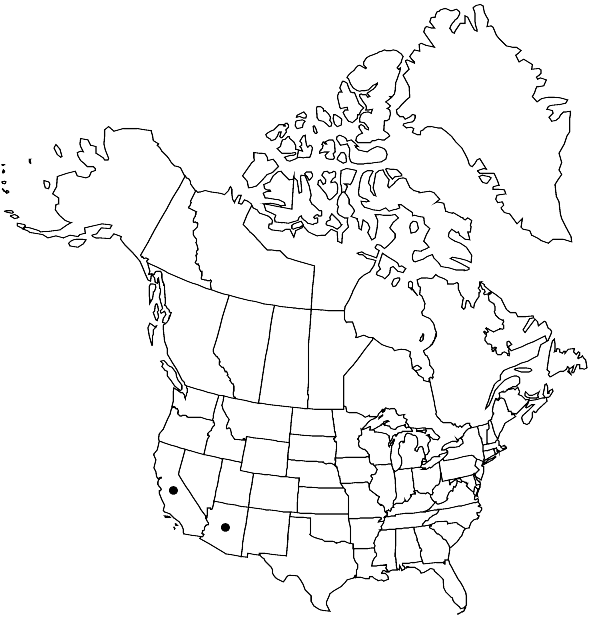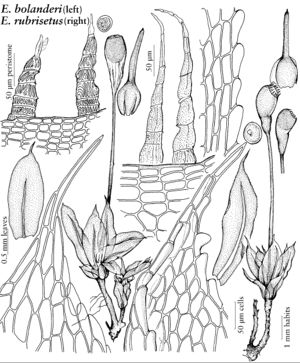Entosthodon bolanderi
Trans. Amer. Philos. Soc., n. s. 13: 10. 1865,.
Plants 2–5 mm, pale yellow-green, the main axis often arising from a fleshy rhizome. Leaves variously contorted when dry, ovate to oblong or obovate, imbricate, somewhat concave, mostly 2–3 mm; margins entire to weakly serrulate by projecting ends of thin-walled cells; apices narrowed to an acumen bearing a short, mostly 1-celled filiform tip; costa ending 1/2–3/4 the leaf length; basal laminal cells rectangular (50–75 × 25–30 µm), distal cells irregularly rectangular, polygonal to oblong rectangular, little differentiated at the margins. Seta 6–10 mm, straight, not hygroscopic. Capsule ovoid-pyriform from an apophysis accounting for about half the total length, 2–3 mm, changing little when dry and empty; exothecial cells scarcely thickened, narrowly oblong and transversely elongate in 5–7 rows proximal to the mouth; operculum a rounded dome; peristome well developed, exostome teeth pale brownish yellow, lanceolate with thin trabeculae basally and terminating in a 1–2-celled hyaline evanescent tip, striate basally and nearly smooth at the tips, endostome not seen. Calyptra cucullate, long-beaked, inflated around the capsule, large, smooth. Spores 27–35 µm, weakly bacculate- insulate.
Habitat: Mineral soils, probably alkaline, or rock crevices
Elevation: moderate to high elevations
Distribution

Ariz., Calif., Mexico (Baja California).
Discussion
In Baja California, Entosthodon bolanderi is found on Guadelupe Island.
Selected References
None.
